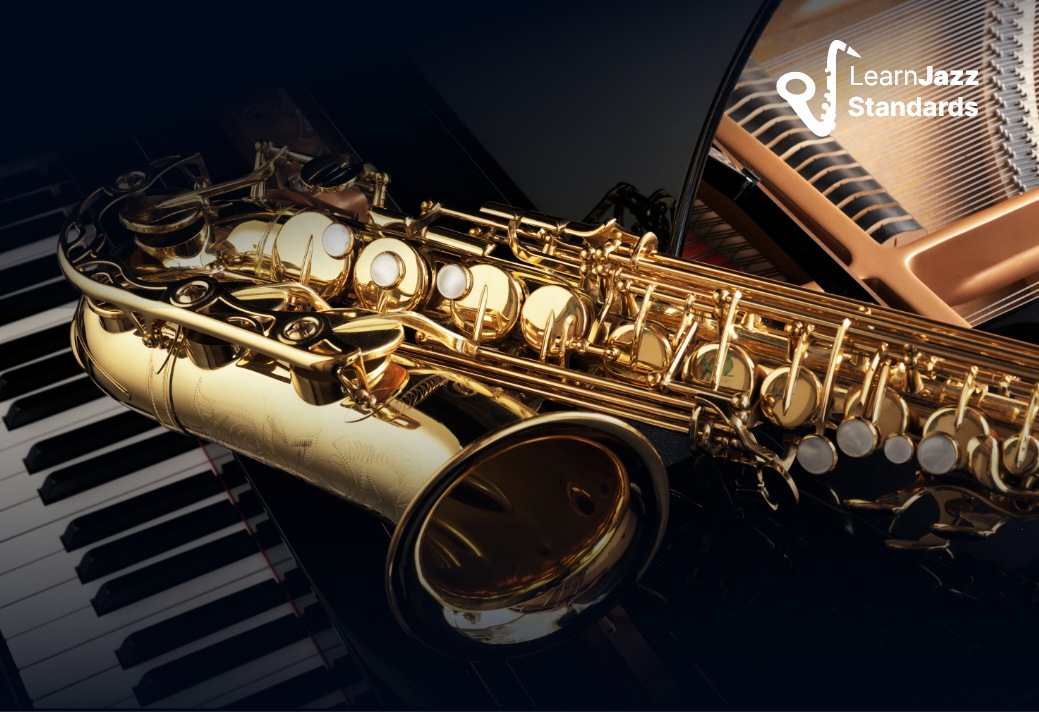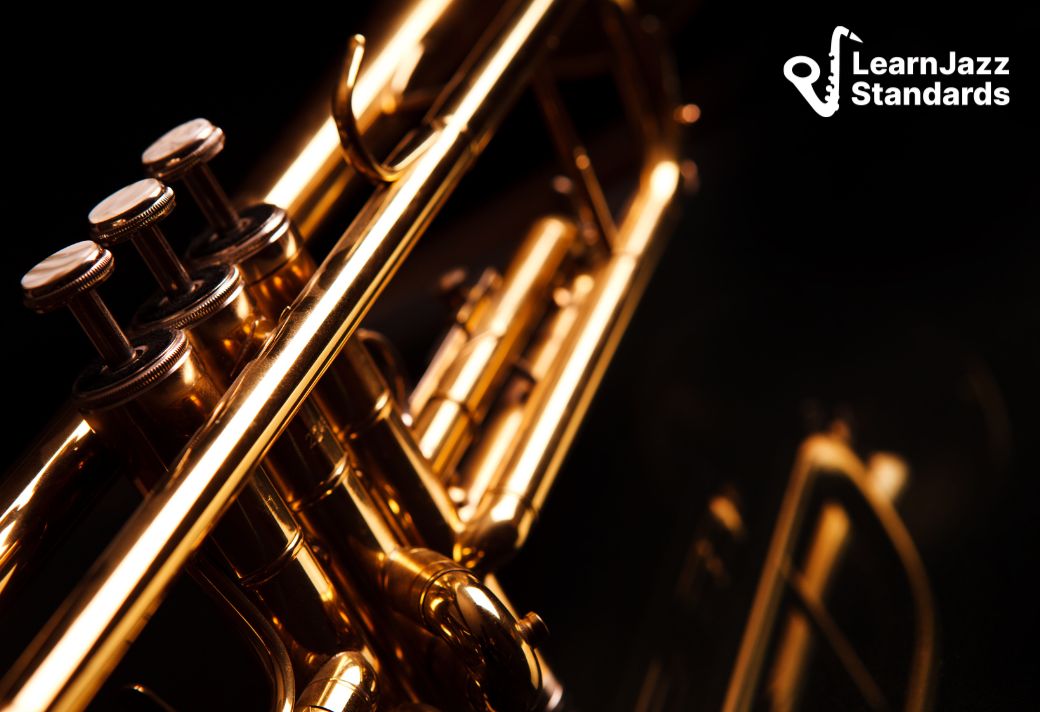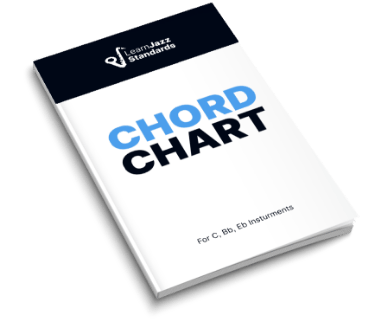The pentatonic scale is everywhere! From rock music, blues, and jazz to world music and other musical styles, pentatonic scales are a nearly universal phenomenon in human cultures worldwide.
Whether studying jazz solos, the music of the Middle Ages, folk music, or Andean music, you’ll be sure to come across this five-note scale in your journey. And, if you were like me, you learned the pentatonic scales and quickly moved on to “bigger and better” scales, leaving pentatonic scales in the dust.
But the pentatonic scale and its pentatonic modes have so many applications! Many musicians fail to utilize major and minor pentatonic scales fully.
Instead of seeing pentatonic scales as a mundane feature of pop and rock music, we’re going to explore all the ways you can use the pentatonic scale to supercharge your jazz improv creativity!
And, if you are trying to take your jazz chops to the next level, you need to check out the Learn Jazz Standards Inner Circle!
When you join the Inner Circle, you gain access to years of valuable jazz resources designed to overhaul your jazz chops, supercharge your jazz theory knowledge, and catapult your playing to the next level!
Improve in 30 days or less. Join the Inner Circle!
Table of Contents
Introducing Pentatonic Scales
Pentatonic scales are some of the oldest and most ubiquitous scales in the world, according to Encyclopedia Britannica. They are found within the musical traditions of cultures spanning the globe and are likely to have developed independently across various human societies.
Because they are so common, pentatonic instruments from cultures across the world, like the lyre, the glockenspiel, and various other string instruments and wind instruments, are explicitly tuned to pentatonic scales.
In Western music, pentatonic scales break an octave up into five notes and have no half steps (in some cultures, pentatonic scales have microtonal intervals).
Therefore, pentatonic scales are more ambiguous and open-sounding than seven-note scales. In other words, one pentatonic scale has multiple uses, whereas one seven-note scale has limited applications. Additionally, pentatonic scales contain no half-steps, adding to their versatility.
Essentially, one pentatonic scale has way more applications than larger scales like the major or minor scales, and it’s those applications we’ll explore in this article!
But first, let’s get the basics! This might take you back to your early piano or guitar lessons, but reviewing the basics never hurt anybody!
Major Scale vs. Major Pentatonic Scale
Let’s compare the C major scale to the major pentatonic scale:

Major Scale Formula:
- 1, 2, 3, 4, 5, 6, 7, 1
- W-W-H-W-W-W-H
- C-D-E-F-G-A-B-C
To transform the C major scale into the major pentatonic scale, we’ll need to remove the 4th and 7th scale degrees. In the key of C, we must remove the F and the B from the scale.
Major Pentatonic Scale Formula:
- 1, 2, 3, 5, 6, 1
- C-D-E-G-A
Major Pentatonic Scale Formula:
- 1, 2, 3, 5, 6, 1
- W-W-m3-W-m3
- C-D-E-G-A-C
Natural Minor Scale Vs. Minor Pentatonic Scale
The relationship between the A minor scale and the A minor pentatonic scale is just like the relationship between C major and C major pentatonic. If we remove F and B from an A natural minor scale, we’ll get the A minor pentatonic scale.

Minor Scale Formula:
- 1-2-♭3-4-5-♭6-♭7-1
- W-H-W-W-H-W-W
- A-B-C-D-E-F-G-A

Minor Pentatonic Scale Formula:
- 1-♭3-4-5-♭7-1
- m3-W-W-m3-W
- A-C-D-E-G-A
The C Major Pentatonic Scale and A Minor Pentatonic Scale Are The Same Sequence Of Notes
Are you familiar with relative major and minor keys? The notes in C major are the same sequence as the notes in A minor. This relationship holds for major and minor pentatonic scales, too. That’s because the pentatonic scale is a diatonic scale (it’s derived from the major scale formula).
Two Scales. Same Notes!
- Minor Pentatonic Scale: A-[C-D-E-G-A]-C-D-E-G-A
- Major Pentatonic Scale: C-D-E-G-[A-C-D-E-G]-A-C
It’s the same sequence; only one starts on C, and the other starts on A. Otherwise, these scales are made from the same notes. From now on, we’ll primarily refer to the minor pentatonic scale because the C major pentatonic scale and the A minor pentatonic scale are sequentially the same.

For more on major scales, minor scales, and modes, check out our ultimate guide to modes.
Pentatonic Scale Modes
Major and minor scales have modes, and the pentatonic scale has modes, too!
Because the pentatonic scale is a sequence of notes that repeat, you can start from any note in that sequence. The resulting mode has a different order of steps than its compatriot modes despite sharing the same sequence (it’s the same idea with full seven-note scales).
Pentatonic Scale Modes Sequentially Visualized:
- C-D-E-G-A-C-D-E-G-A-C-D-G-A
- C-D-E-G-A-C-D-E-G-A-C-D-G-A
- E C-D-E-G-A-C-D-E-G-A-C-D-G-A
- C-D-E-G-A-C-D-E-G-A-C-D-G-A
- C-D-E-G-A-C-D-E-G-A-C-D-G-A
- C-D-E-G-A-C-D-E-G-A-C-D-G-A
Here are the five pentatonic modes based on the five tones of the pentatonic scale. We’ll also show the different diatonic chords these modes can function over.
Each pentatonic mode has three distinct diatonic uses, even if the chord quality remains the same. A-7 can be the ii chord in the key of G or the ci chord in the key of C, after all!
1st Mode: C Major Pentatonic
- C-D-E-G-A-C
- W-W-m3-W-m3
Can be played over:
- Cmaj7 (I chord and IV chord)
- C7 (V chord)
2nd Mode: D “Suspended” Pentatonic
- D-E-G-A-C-D
- W-m3-W-m3-W
Can be played over:
- D-7 (ii chord and vi chord)
- D7 (V chord)
3rd Mode: E Blues Minor Pentatonic
- E-G-A-C-D-E
- m3-W-m3-W-W
Can be played over:
- E-7 (vi chord and iii chord)
- E-7b5 (viiø chord)
4th Mode: G Blues Major Pentatonic
- G-A-C-D-E-G
- W-m3-W-W-m3
Can be played over:
- Gmaj7 (I chord)
- G-7 (ii chord)
- G7 (V chord)
5th Mode: A Minor Pentatonic
- A-C-D-E-G-A
- m3-W-W-m3-W
Can be played over:
- A-7 (ii chord, iii chord, and vi chord)
BEFORE YOU CONTINUE...
If you struggle to play amazing jazz solos and want to learn the secret strategies the pros are using to improvise, our free guide will get you on the right track.

9 Important Applications for the Pentatonic Scale
Here’s the really cool part. We are going to use one pentatonic scale shape—the minor pentatonic scale and use it over nine different chords! We’ve got one scale and at least nine different uses.
Basic Uses for the Pentatonic Scale
The first set of examples is more in line with what you’d expect for pentatonic scales. After we cover these more obvious uses, we’ll dive into less common uses.
Remember, we are using one scale form for all these chords. In most cases, it will be an A minor pentatonic scale, which is equivalent to the C major pentatonic scale.
1. Root Minor Chords
This one makes a lot of sense.
It’s a minor scale with five notes, so playing this scale over a minor chord makes sense.
When I say root minor chords, I mean that the chord’s root is the same as the scale’s root note. So you can play an A minor pentatonic over an Amin7 (or Am) chord.
Take a look and then listen:

Chord Tones:
- G – 7th
- E – 5th
- D – 11th
- C – 3rd
- A – Rt.
For more on other types of minor scales, check out our article on the three main types of minor scales.
2. Root Dominant 7th Chords
The same pentatonic scale can be played over an A7 chord.
This is most commonly applied in a blues situation and is quite close to the actual minor blues scale (you are only missing the b5). This skips the major 3rd of A7 (C#), but you don’t need the major third when playing over a dominant quality chord.

For more on blues scales, check out this blues scale masterclass.
Pentatonic Scales and Diatonic Harmony
We can also consider using pentatonic scales in the context of a key center. For example, an A minor chord (corresponding to our A minor pentatonic scale) is relative to C major. For more on relative major and minor, check out our article on parallel and relative minor keys.
Now we are in the key of C major. What chords are relative to C major? They are:
- I: Cmaj7
- ii: Dmin7
- iii: Emin7
- IV: Fmaj7
- V: G7
- vi: Amin7 (relative minor)
- vii: Bmin7(b5)
For pretty much all of these, you can play an A minor pentatonic (which, remember, is the same scale as the C major pentatonic scale). Let’s go over the chord qualities that the A minor pentatonic scale works over.
3. The relative major chord
Remember, the A minor pentatonic scale is the same as a C major pentatonic scale, only starting on an A note. (The note you start on in a musical situation doesn’t usually matter.)

Chord Tones:
- G – 5th
- E – 3rd
- D – 9th
- C – Rt.
- A – 6th
4. The major IV chord of the relative major.
If we think in the key of C major, the IV chord is F major 7. The 6th note of the F major scale is played in the A minor pentatonic, so if you wanted to be more specific, you could play an Fmaj13 chord.

Chord Tones
- G – 9th
- E – 7th
- D – 6th/13th
- C – 5th
- A – 3rd
5. The minor ii chord of the relative major.
In this case, we would play an A minor pentatonic scale over D minor 7. More accurately, you could play a Dmin9 or a Dmin11 since both extensions are hit in the A minor pentatonic. Of course, you could also play a D minor pentatonic over a Dmin7 chord.

Chord Tones:
- G – 11th
- E – 9th
- D – Rt.
- C – 7th
- A – 5th
6. The V sus4 chord of the relative major.
In this case, a G7sus. You could play a regular V dominant chord, but since the relative minor pentatonic emphasizes the sus4, it would be appropriate to think of it this way. It would be more accurate to play a Gsus13 chord since the 6th is also played.

Chord Tones:
- G – Rt
- E – 6th/13th
- D – 5th
- C – 4th/11th (sus note)
- A – 9th
Alternative Pentatonic Scales Over Diatonic Chords
You could play the A minor pentatonic scale over any of the chords in the key center of C major, but there are better options for some diatonic chords.
For example, playing the minor pentatonic scale shape from A over an E-7 chord (the iii chord) technically works. But you could just as easily play an E minor pentatonic (or G major pentatonic) over this chord.

E minor (or G Major) Pentatonic Scale Formula:
- E-G-A-B-D-E
But the one that deserves a little bit more attention is the vii half-diminished chord (Bmin7b5).
7. The ii minor pentatonic over the vii chord.
This chord is often thought of as the ii chord in the relative minor (A minor), but this pentatonic doesn’t highlight the most important note in that chord:
- the flat 5 (F)
The minor scale that would highlight that b5 is the D minor pentatonic scale. Therefore, this is a better option to play over this chord.

Chord Tones:
- C – 9th
- A – 7th
- G – 6th/13th
- F – b5th
- D – 3rd
“Uncommon” Applications of the Pentatonic Scale
Let’s get to the juicy stuff! It’s amazing all the different chords you can play over rising just five notes!
8. Pentatonic scale a half step down from a Major 7(b5) chord.
Have you ever seen this chord in a playing situation and had no idea how to improvise? This is a great option for grouping notes to play over this chord.
In this particular case, we are playing an A minor pentatonic over a Bbmaj7(b5) chord. Why? The scale starts on the 7th of Bb major, and the pentatonic highlights the most important note in this chord: the flat 5 (E).

Chord Tones:
- G – 13th
- E – b5th/#11th
- D – 3rd
- C – 9th
- A – 7th
9. Applying minor pentatonics to a ii-V-I.
Jazz guitarist Vic Juris has a pretty inventive way to help us apply this scale with some chordal movement. Take a look at this concept in notation:

We’ve already gone over how the pentatonic scale works over a Dmin7. We’ve also already covered the concept of playing a minor pentatonic scale a half step down from a maj7(b5) chord.
The new member of the group here is the A# pentatonic over the G7alt chord. You can think of this as just playing the pentatonic scale, a minor third up from the root of a given dominant chord. You hit all possible alterations in a dominant seventh chord (#9, b9, #11, #5).
It may sound slightly “out,” but it has a really nice sound when you resolve to the Cmaj7(#11).
Finally, check out this video on how to use pentatonic scales:
Important Scale Disclaimer!
Now that we’ve discussed pentatonic scales, I have an essential scale disclaimer for you:
Scales are simply sequences of pitches.
Functionally, studying scales helps us conceptualize music and play our instruments more effectively.
However, they are not musical in and of themselves.
They help us group notes together functionally and understand music theory, but the scales are just pitch sequences. It’s up to the musician to take those collections of pitches and make music out of them.
You must keep this in mind when practicing! Practicing scales is not playing music, but practicing scales helps you play music!
For more on jazz scales, check out these sixteen essential jazz scales. If you are a guitar player, check out our guitar-specific scale guide.
Want More Info Like This? Join the Learn Jazz Standards Inner Circle
Are you looking to take your jazz playing to the next level?
The Learn Jazz Standards Inner Circle has all the materials you need to supercharge your jazz improvisation skills, master music theory, and take your jazz chops to the next level, whether you are a piano player, guitar player, horn player or any kind of player!
Ready to become the best jazz player you can be?
Improve in 30 days or less. Join the Inner Circle.









